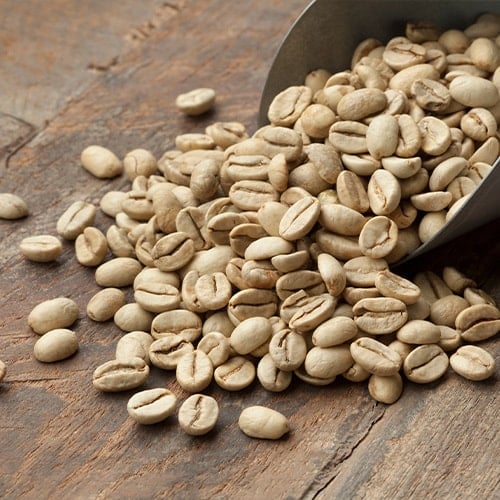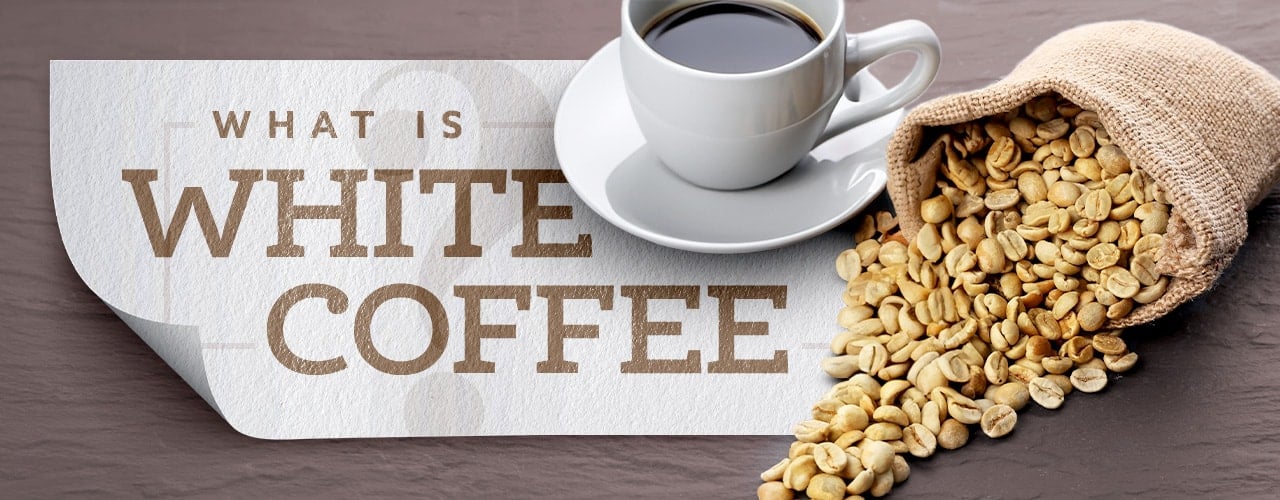When it comes to coffee, there are various roasts and blends to choose from. One roast that has been gaining popularity over the years is white coffee. But what exactly is white coffee, and what makes it different from regular coffee? Not to be confused with Malaysian white coffee or a flat white, which are types of coffee drinks, white coffee has a distinct flavor that makes it a great option for those looking for something new and exciting.
What Is White Coffee?
White coffee gets its name from its unique roasting process, which involves roasting coffee beans at a lower temperature for a shorter time than other coffee roasts. This results in a lighter color and a milder flavor profile. Unlike other coffee roasts where the beans have a medium to dark brown color, white coffee beans have a pale yellow-beige color.
White Coffee vs Black Coffee

Shown here: White roast coffee beans vs. medium roast coffee beans. White roast coffee is a yellow-beige color compared to other coffee roasts with a medium to dark brown color.
The significant difference between white coffee and black coffee is the roasting temperature and time. Black coffee is roasted at higher temperatures ranging from 400 to 475 degrees Fahrenheit for longer, whereas white coffee is half-roasted at a lower temperature of 325 degrees Fahrenheit. Compared to light roast coffee that is pulled right after the first crack in the roasting process, white coffee beans are pulled just before the first crack when the bean is a whiteish color. The short roasting time of white coffee means it is less acidic than traditionally roasted black coffee, making it a great option for those with sensitive stomachs.
Because white coffee is roasted for less time at a lower temperature, the beans are denser and harder. This makes white coffee beans very difficult to grind in a standard home coffee grinder, so it is best for coffee roasters to sell ground white coffee instead of whole beans.
White coffee is often touted as a healthier alternative to black coffee because it retains many antioxidants found in green coffee, including chlorogenic acid. This powerful antioxidant has been linked to various health benefits, including weight loss, improved heart health, and reduced inflammation. As coffee beans roast, chlorogenic acid levels decrease, so white bean coffee contains more chlorogenic acid than other roasts.
What Does White Coffee Taste Like?

While the taste of white coffee will be dependent on the bean variety - arabica or robusta - and the coffee's origin, the roasting process gives it a unique flavor profile and light, smooth body. Unlike traditional coffee, which is roasted until it turns brown and develops a strong, bitter flavor, white coffee has a sweet, nutty taste with a hint of floral notes.
The sweetness comes from the natural sugars in the lightly roasted beans, while the nuttiness comes from the natural oils retained during the roasting process. This makes white bean coffee an excellent choice for those who want coffee that is not as strong or bitter.
Does White Coffee Have More Caffeine?
White coffee contains up to 50% more caffeine than black coffee. This is because as the beans roast, the natural caffeine is burnt off, so white coffee's roasting process retains much more caffeine than fully roasted coffee. As with any coffee roast, the caffeine levels in a single cup will vary based on the brewing method.
White coffee and regular coffee differ in the roasting process, caffeine content, acidity levels, and taste. While white coffee may not be as widely known as regular coffee, it is an in-demand coffee trend that will set your menu apart from the rest.



